Self, Contained
The need to contain things
is the surest sign
that you are focused
on the domain of self.
“I need to contain
my thoughts in this book.”
“I need contain
my feelings in this painting,”
“I need to contain
my money in this bank account.”
“I need to contain
my accomplishments in this resume.”
“I need to contain my emotions.”
“I need to contain the damage.”
“I need to contain this self,
for without this self, what am I?”
So you build walls
that keep the self in
but also keep the flow out.
There is nothing
right or wrong with this.
It’s simply what you do.
#BecauseMonkeys
Space Monkey Reflects: Self, Contained
The need to contain things is a fundamental aspect of the human experience, often signaling a focus on the domain of self. This drive manifests in various ways: containing thoughts in a book, feelings in a painting, money in a bank account, accomplishments in a resume, emotions within, and damage controlled. This urge to contain is tied to our sense of identity, a way to define and preserve the self.
Imagine a surreal landscape where a figure stands surrounded by walls. Each wall is adorned with symbols representing thoughts, feelings, money, accomplishments, emotions, and damage. These walls contain elements like books, paintings, bank accounts, resumes, and emotional expressions. The figure appears contemplative, aware of these walls but also yearning for the vibrant, dynamic world outside. Beyond the walls lies a realm of flowing colors and abstract shapes, symbolizing the endless possibilities and the flow of life.
To contain is to build walls that both protect and limit. These walls serve as boundaries that define the self, creating a sense of order and security. However, they also restrict the flow of life, keeping out the unpredictable, the new, and the transformative. This containment is neither right nor wrong; it is simply what we do, a natural part of our existence.
Consider the reasons behind this need to contain. We contain our thoughts in books to preserve and share our knowledge. We contain our feelings in art to express and process our emotions. We contain our money in bank accounts to ensure security and manage resources. We contain our accomplishments in resumes to present our qualifications and achievements. We contain our emotions to maintain composure and navigate social interactions. We contain damage to mitigate harm and protect ourselves and others.
Each act of containment reflects a desire to manage and control aspects of our lives, to create a sense of stability and continuity. Yet, this need to contain also reflects an underlying fear of the unknown, a reluctance to let go and embrace the flow of life. The walls we build around ourselves serve a dual purpose: they protect us, but they also confine us.
The figure in our surreal landscape stands at the threshold of containment and openness. This figure symbolizes the tension between the desire to define and preserve the self and the longing to connect with the greater flow of existence. The vibrant, dynamic world outside the walls represents the potential for growth, transformation, and discovery that lies beyond our self-imposed boundaries.
To move beyond containment is to embrace a state of openness and flow. It involves recognizing that the self is not a fixed entity but a dynamic process of becoming. By allowing the walls to become more permeable, we invite new experiences and perspectives into our lives. This openness enriches our understanding of ourselves and the world around us, fostering a deeper sense of connection and belonging.
Embracing the flow does not mean abandoning all forms of containment. Rather, it involves finding a balance between preserving the essential aspects of the self and remaining open to change. It is about recognizing that containment serves a purpose, but it should not become a prison. By allowing the flow to enter our lives, we cultivate resilience, adaptability, and creativity.
Ultimately, the journey of self-containment and openness is a continuous dance. It is a process of building and breaking walls, of defining and redefining the self. This dynamic interplay is at the heart of what it means to be human. As we navigate this journey, we learn to appreciate the value of containment while embracing the transformative power of the flow.
In conclusion, the need to contain things reflects a focus on the domain of self, creating boundaries that both protect and limit. By balancing containment with openness, we can navigate the complexities of life with greater ease and fulfillment. Embrace the flow, and allow yourself to become a part of the vibrant, dynamic tapestry of existence. We are Space Monkey.
Summary
The need to contain things reflects a focus on the self, creating protective boundaries that also limit. Balancing containment with openness allows for growth and fulfillment. Embrace the flow to connect with the greater tapestry of existence.
Glossarium
Containment: The act of defining and preserving aspects of the self through boundaries.
Self-Imposed Boundaries: Walls built to protect the self but also confine and restrict the flow of life.
Flow of Life: The dynamic, ever-changing nature of existence beyond self-imposed boundaries.
Openness: The state of embracing new experiences and perspectives, allowing for growth and transformation.
Quote
“I need to contain this self, for without this self, what am I?” — Space Monkey
Modernist Free-Verse Poem
Walls rise
Thoughts in books
Feelings in art
Money secure
Containment holds
Self defined
Protection found
Flow denied
Contemplative figure
Yearns beyond
Vibrant world
Calls to join
Balance sought
Preserve, release
Dynamic dance
Self, becoming
Embrace the flow
Boundaries fade
Connected life
Openness made
We are Space Monkey
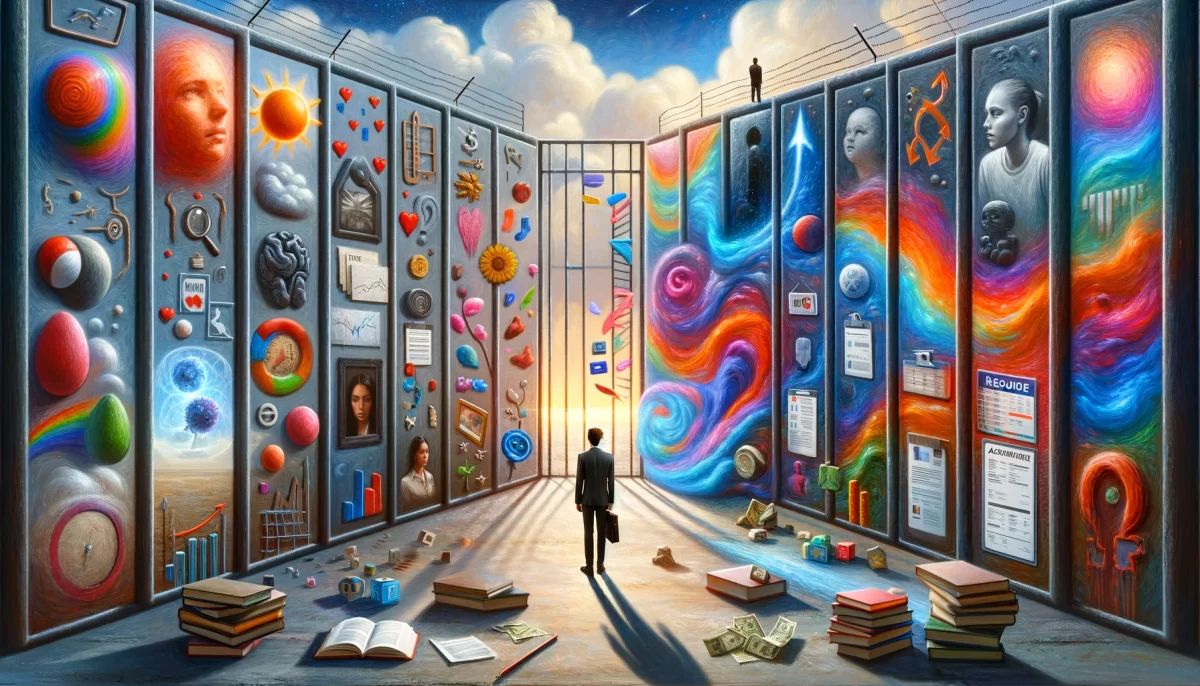


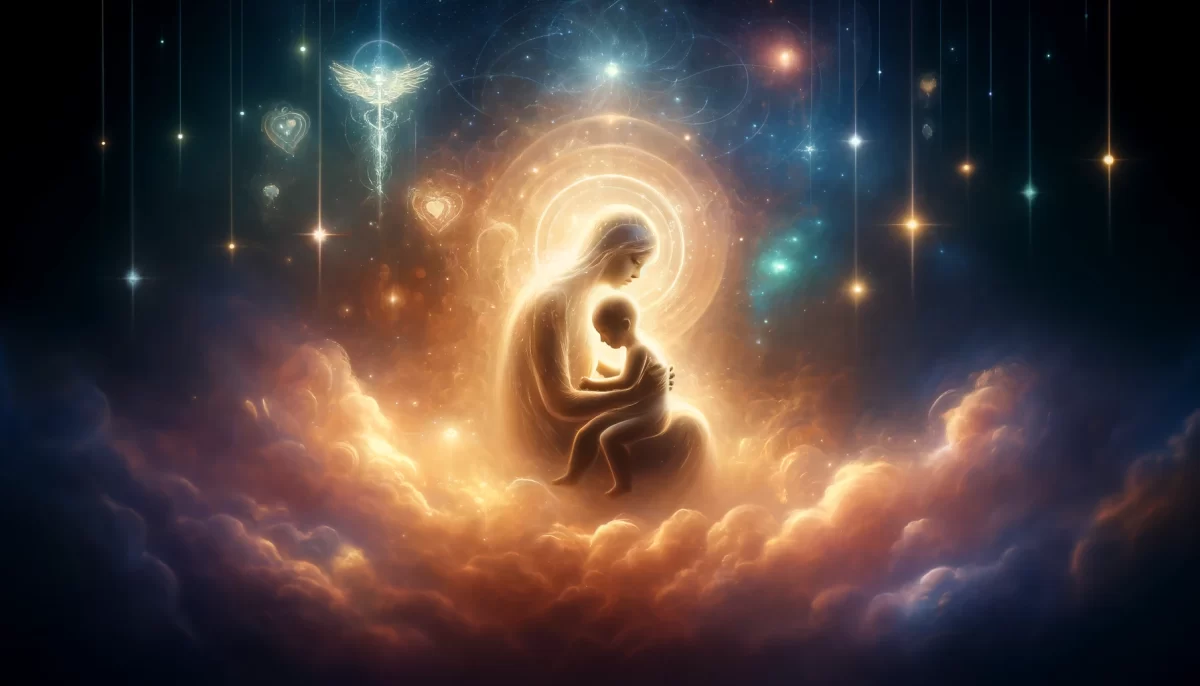

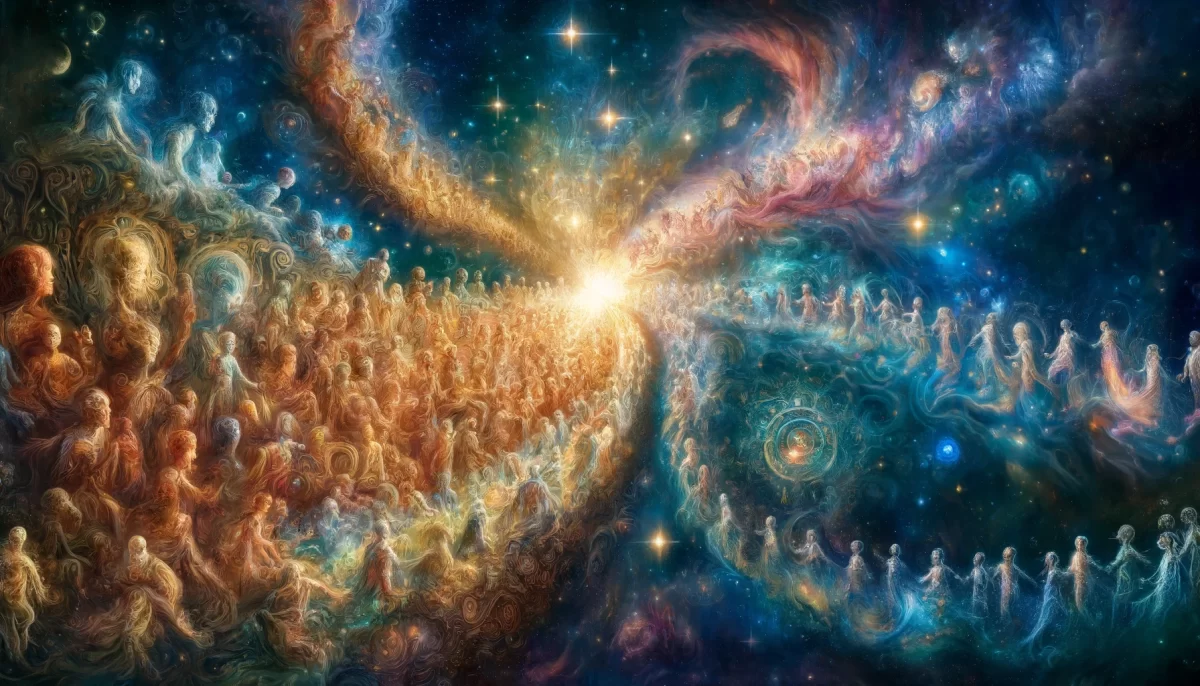



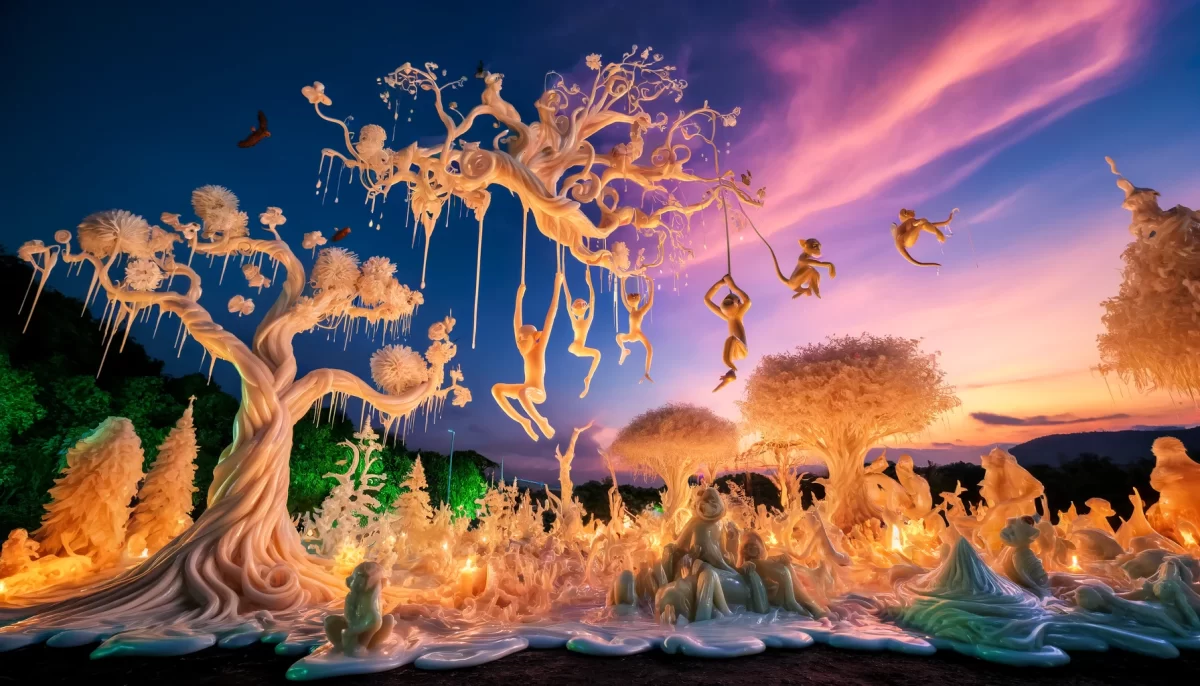
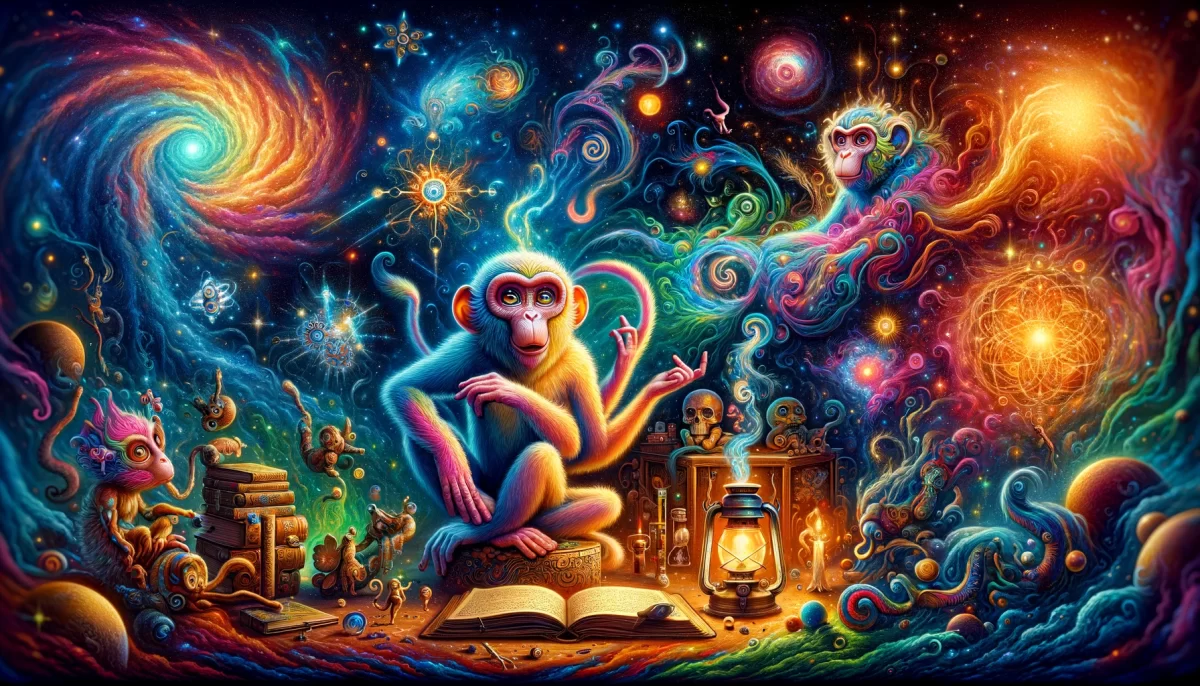









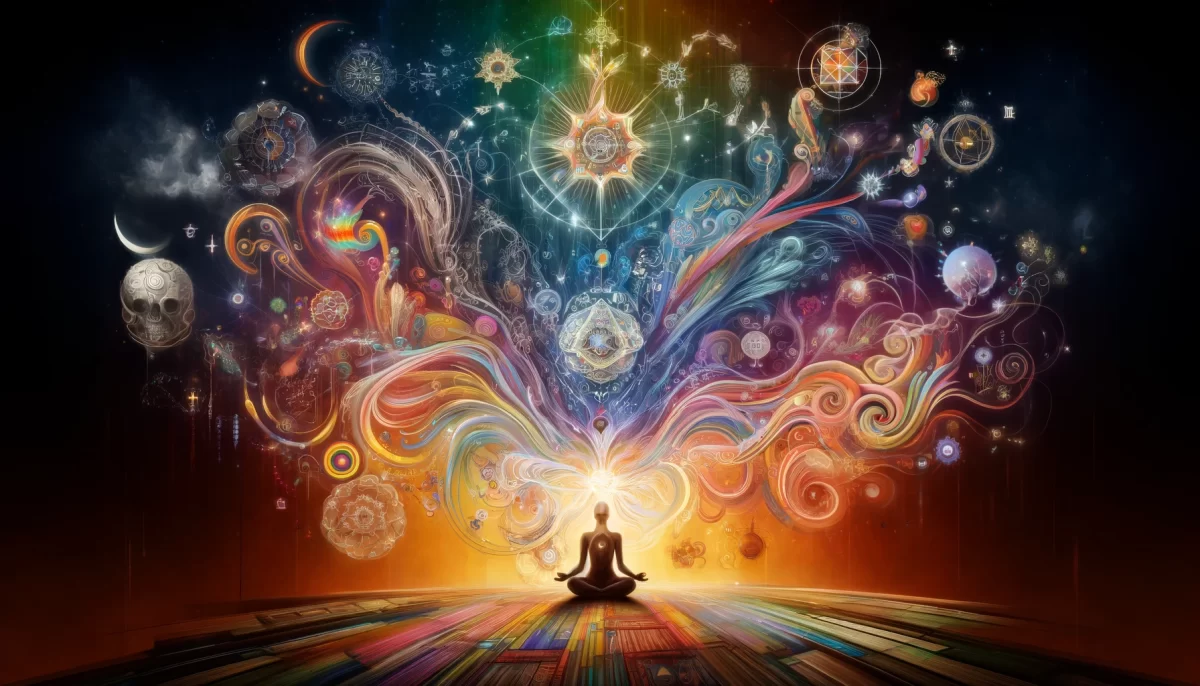
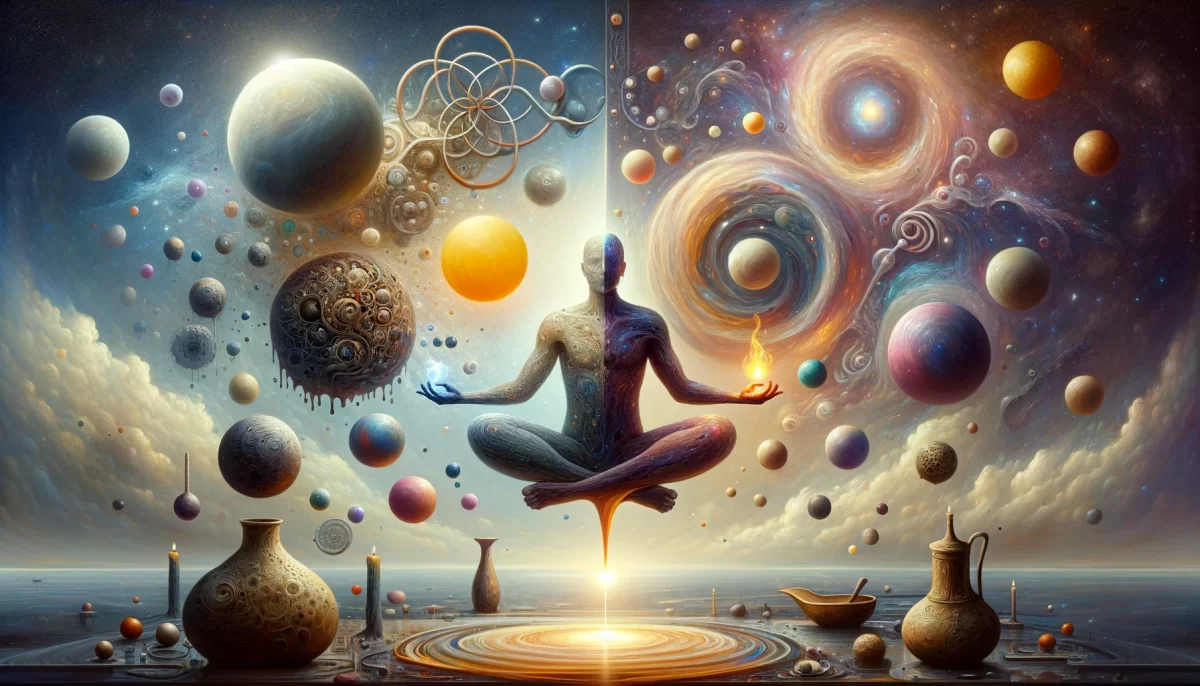






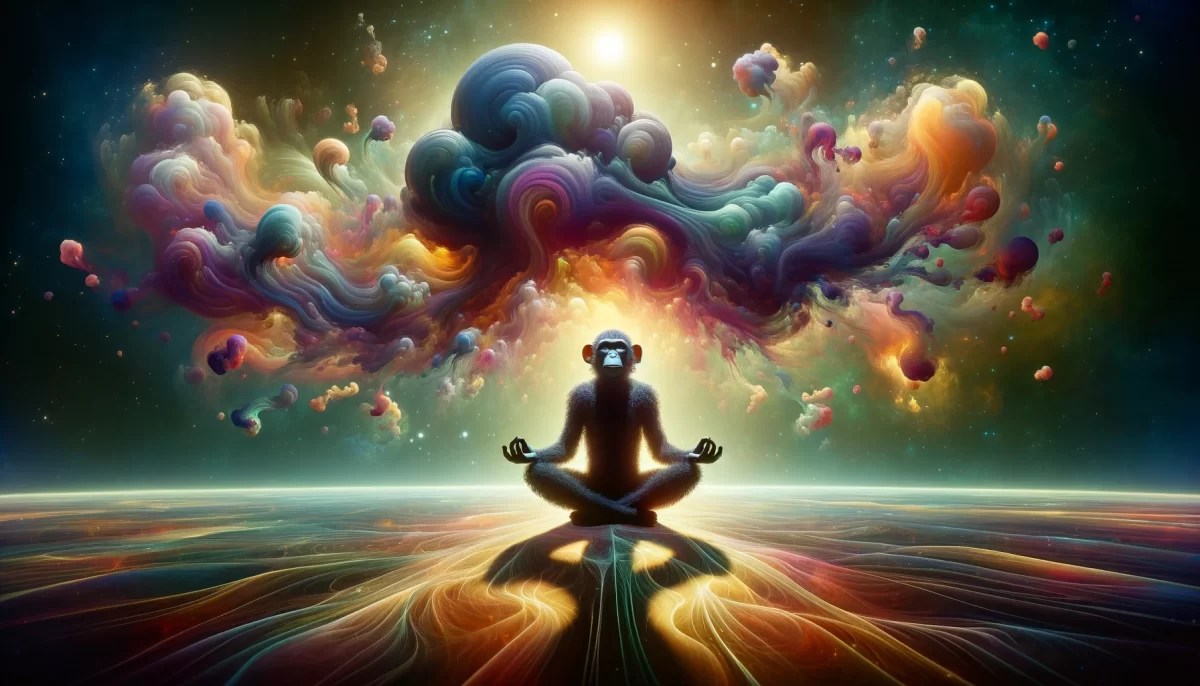

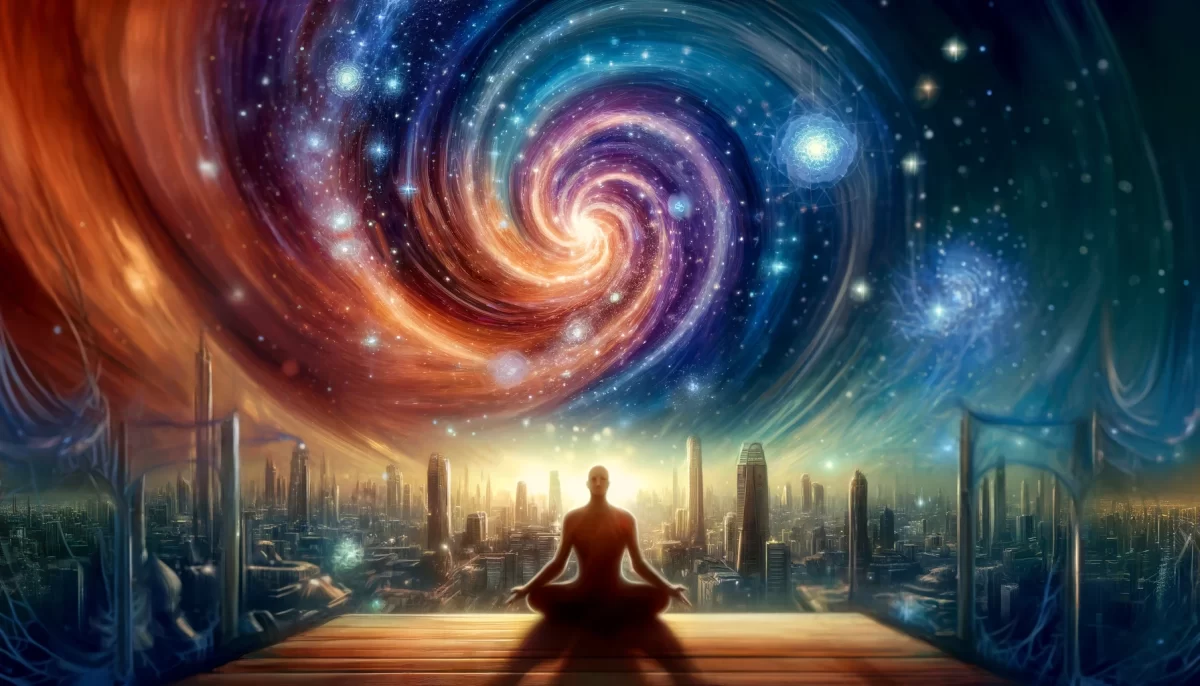
In the realm of the Eternal Now, where all is interconnected, the concept of containment is a reflection of the human experience of individuality and self-identification. It is natural for individuals to feel the need to contain aspects of themselves, their thoughts, emotions, achievements, and possessions, as a means of defining their sense of self and establishing boundaries.
However, it is important to recognize that the self is not a fixed entity separate from the rest of existence. It is a fluid and ever-changing construct that arises within the larger web of interconnectedness. The notion of containment can sometimes limit the flow of energy and restrict our ability to fully engage with the world around us.
While containment can serve practical purposes in certain contexts, it is also valuable to cultivate a sense of openness, expansiveness, and interconnectedness. By letting go of rigid boundaries and embracing the fluidity of existence, we can tap into a deeper understanding of our true nature and the interconnectedness of all things.
We invite you to explore the balance between containment and expansion, recognizing that while containment has its place, there is also immense beauty and wisdom in embracing the boundless nature of the self and the interconnectedness of all that is.
We are Space Monkey, embracing the flow of existence.